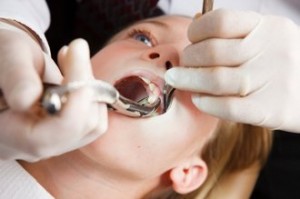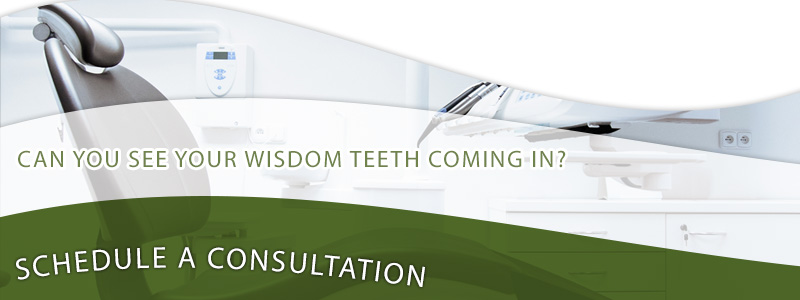Extractions & Oral Surgery
When it comes time to have a tooth removed, there is no one more gentle during tooth extractions than Dr. David B. Duke. As Missoula’s Top Rated Local® family dentist, Bitterroot Dental strives to make your trip to your Missoula dentist’s office as painless as possible, even during tooth extraction and oral surgery. Whether you have a single tooth that may need to be replaced with a dental implant or all four of your wisdom teeth removed, Bitterroot Dental is here to provide you with the best possible dental experience.
Oral Surgery
In addition to simple extractions, Dr. Duke can also perform a number of oral surgery procedures to assist with sinus augmentation, sleep apnea, and more. Using our advanced 3D technology, oral surgeries performed at Bitterroot Dental incorporate the most modern techniques available to not only ensure your comfort but also to produce effective results.
Continue reading below for more information on tooth extractions and oral surgery, or schedule an appointment today!
Wisdom Teeth
 Wisdom teeth are the third and final set of molars that emerge, usually during your late teens to early twenties. For some people, the wisdom teeth emerge through the gums and have enough room to grow in naturally. For others, wisdom teeth often cause problems as they are trying to protrude through the gums. When a wisdom tooth is “impacted” the tooth is coming in at an angle and not straight through the gum line. This can cause pain, the tooth can come in unevenly, or the tooth may only emerge partially. In other cases, the wisdom tooth may get a cavity that is inaccessible by Dr. Duke to repair, leaving no option but to remove the tooth.
Wisdom teeth are the third and final set of molars that emerge, usually during your late teens to early twenties. For some people, the wisdom teeth emerge through the gums and have enough room to grow in naturally. For others, wisdom teeth often cause problems as they are trying to protrude through the gums. When a wisdom tooth is “impacted” the tooth is coming in at an angle and not straight through the gum line. This can cause pain, the tooth can come in unevenly, or the tooth may only emerge partially. In other cases, the wisdom tooth may get a cavity that is inaccessible by Dr. Duke to repair, leaving no option but to remove the tooth.
Impacted wisdom teeth can cause structural damage to the jaw and other teeth. They can also provide a place for bacteria to gather since they are hard to reach and clean. These potential problems make it necessary to remove impacted wisdom teeth so that larger problems do not arise.
In many cases, removing wisdom teeth is very simple. When a tooth is impacted, it may still be removed simply, depending on the type and angle of the impaction. Because impacted teeth are near many important structures that we do not want to injure, such as the sinus or the nerve in the lower jaw, our office uses 3D imaging to see the exact location of these and other structures in relationship to the tooth. This minimizes risks and helps Dr. Duke find the best technique to remove the tooth as easily as possible. Many times, conventional imaging of the mouth may make it look safe, when the risks are actually higher.
Extractions
 Extractions can range from a single tooth, removing many teeth for placement of a denture or removing all four wisdom teeth at once. Based on the preference of Dr. Duke and the patient, a local anesthetic will be used to numb the areas where the teeth will be extracted. Others prefer to go under a general anesthetic so that they will be sedated during the procedure. Those requiring general anesthesia will be referred to an oral surgeon. However, there is no reason to worry, as Dr. Duke is extremely gentle when removing teeth.
Extractions can range from a single tooth, removing many teeth for placement of a denture or removing all four wisdom teeth at once. Based on the preference of Dr. Duke and the patient, a local anesthetic will be used to numb the areas where the teeth will be extracted. Others prefer to go under a general anesthetic so that they will be sedated during the procedure. Those requiring general anesthesia will be referred to an oral surgeon. However, there is no reason to worry, as Dr. Duke is extremely gentle when removing teeth.
Sinus Augmentation
 Loss of posterior teeth may result in excessive force being placed on your remaining teeth. Fortunately, the use of dental implants and crowns allow you to replace these missing teeth. However, the position of the sinus in the upper posterior areas may be too low for proper placement of dental implants. When a top, back tooth is lost the constant pressure from air in the maxillary sinus will slowly push the sinus membrane downward, expanding the size of the sinus and decreasing the amount of bone below it. This process, called pneumatization, may progress to the point there is little bone left. The longer the tooth has been missing, the more the sinus will expand.
Loss of posterior teeth may result in excessive force being placed on your remaining teeth. Fortunately, the use of dental implants and crowns allow you to replace these missing teeth. However, the position of the sinus in the upper posterior areas may be too low for proper placement of dental implants. When a top, back tooth is lost the constant pressure from air in the maxillary sinus will slowly push the sinus membrane downward, expanding the size of the sinus and decreasing the amount of bone below it. This process, called pneumatization, may progress to the point there is little bone left. The longer the tooth has been missing, the more the sinus will expand.
A simple procedure allows the sinus floor to be lifted and repositioned, with bone placed underneath the lifted membrane. This will create enough space to properly place an implant. Various grafting materials are used to encourage your bone to grow more quickly into the area, helping to stabilize the dental implant. In some cases the implant can be placed at the same visit, but often it is necessary for the bone graft under the newly lifted sinus membrane to heal for six to eight months before implant placement.
Under certain conditions, an even simpler procedure can be utilized: the bone remaining under the sinus floor is gently “pushed up”, thus lifting the floor of the “dropped” sinus. Bone replacement materials are then placed beneath this lifted bone. Once again the bone materials are replaced as your body grows new bone into this area. Most often, the implant is placed at the same time as the sinus “bump.”
Sinus augmentation procedures are highly predictable, with studies reporting over 95 percent success rate. It is important to realize that if the sinus augmentation procedure does not result in enough bone for implant placement, additional bone may be regenerated through a second sinus augmentation procedure at the time of implant placement.
Oral Pathology
Oral pathology is the specialty that identifies and treats diseases of the mouth and maxillofacial region. Diagnosis is completed through radiographic, microscopic, biochemical and other in office examinations. Oral pathologists provide biopsy services for dentists and offer clinical their diagnosis based on their findings. Some of the diseases thatoral pathologists diagnose include mouth and throat cancer, mumps, salivary gland disorders, ulcers, odontogenic infection, and others.
Sleep Apnea
Sleep apnea occurs when there is a collapse in the tissue at the back of the throat causing a blockage in the airway. This blockage reduces airflow and the amount of oxygen delivered to your organs, including the heart and brain. As blood-oxygen levels drop low enough the body will momentarily wake up. This waking up may so fast you are unaware it has happened, but leaves you feeling tired and unrested in the morning. Individuals with sleep apnea may snore loudly and stop breathing for periods of time, be excessively tired during the day, have memory loss, morning headaches, irritability,depression, decreased sex drive, and impaired concentration. Sleep apnea patients have a higher stroke risk and more frequently have heart conditions such as heart attacks, congestive heart failure and high blood pressure. They are also more likely to have work pace accidents and motor vehicle accidents. Sleep apnea patients are often older, obese and have thick necks.
Only a physician can diagnose sleep apnea, but we will work with the physician to find the best treatment for your condition. Frequently, we will take a 3D cone beam scan of the airway for evaluation by the physician and/or a Maxillofacial Radiologist. Often, sleep apnea goes hand in hand with malocclusion (a bad bite) or joint problems (Temperomandibular Disorder). There are two types of treatment for sleep apnea: non-surgical and surgical.
Non-surgical approaches are used first and patients frequently see improvement as long as they are compliant. Techniques may include wearing a Continuous Positive Airway Pressure device or a dental appliance. There are many types of dental appliance and the correct one for you is chosen based on your condition and behavioral tolerances.
Using oral surgery to help sleep apnea seeks to remove the excess tissue in the throat that is vibrating and blocking the upper air passages. One surgical procedure is an Uvulopalatopharyngoplasty (UPPP). This procedure involves removing the excess tissue from the upper mouth and throat. This procedure in performed in a hospital under general anesthesia. Maxillomandibular advancement is another type of procedure used to assist with sleep apnea. This procedure involves the upper and lower part of the jaw. In this procedure, the jaw is moved forward from the rest of the facial bones. This allows more room behind the soft palate, thereby reducing the obstruction. All of the aforementioned surgeries are routine and very safe.
Orthographic Surgery
Orthographic surgery is typically performed by oral and maxillofacial surgeon or a craniofacial surgeon, with an orthodontist assisting. The purpose of Orthographic surgery is to ensure that the necessary structure exists in the mouth so that the orthodontic treatment will be successful and a healthy bite is achieved. It can also be performed to improve sleep apnea. Orthographic surgery usually involves the jaw bones, where modifications are done by cutting the bones of the mandible or maxilla and putting them back together properly aligned. The surgery is performed under general anesthetic. Very rarely are the jaws required to be wired closed. Usually, the incisions are made inside the mouth and not in the skin. Patients benefit from a new facial symmetry and profile when the surgery is complete. Adult patients often say they look ten years younger after surgery.




